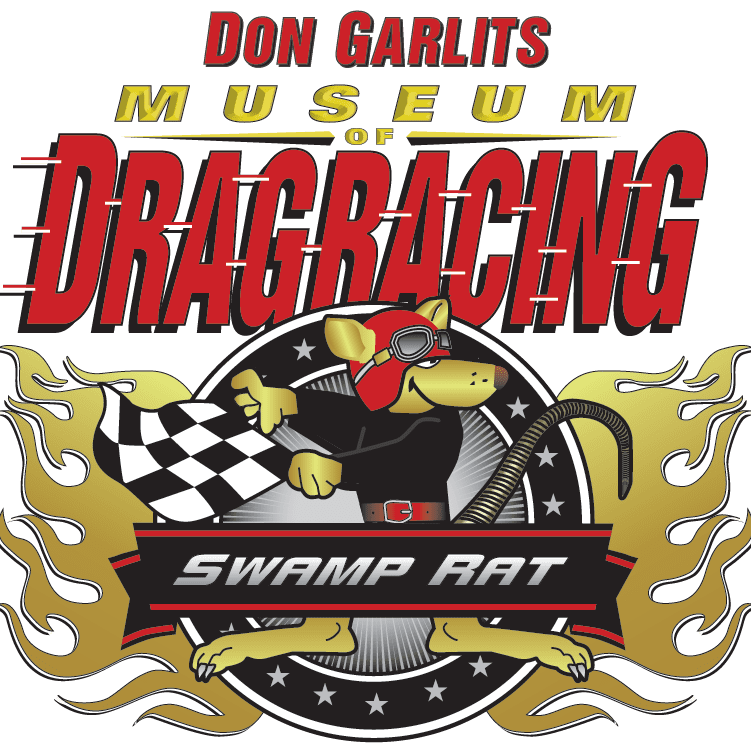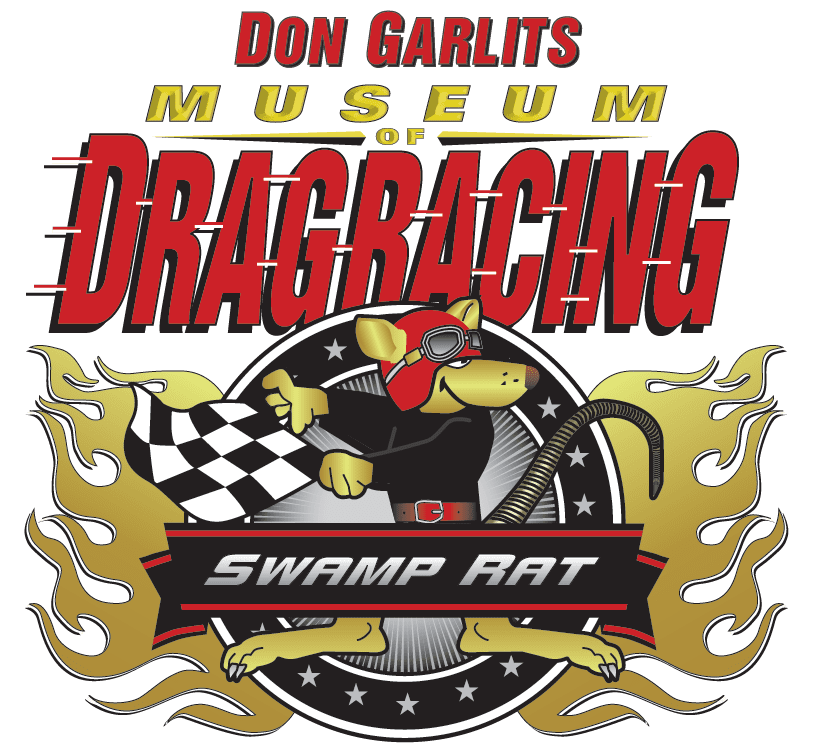2012
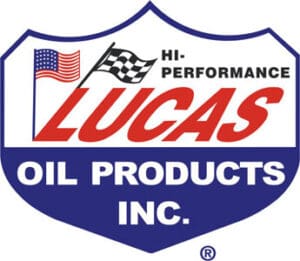
Event Sponsor Lucas Oil Products Held on Thursday March 8, 2012 Hilton University of Florida
Conference Center, Gainesville, Florida.
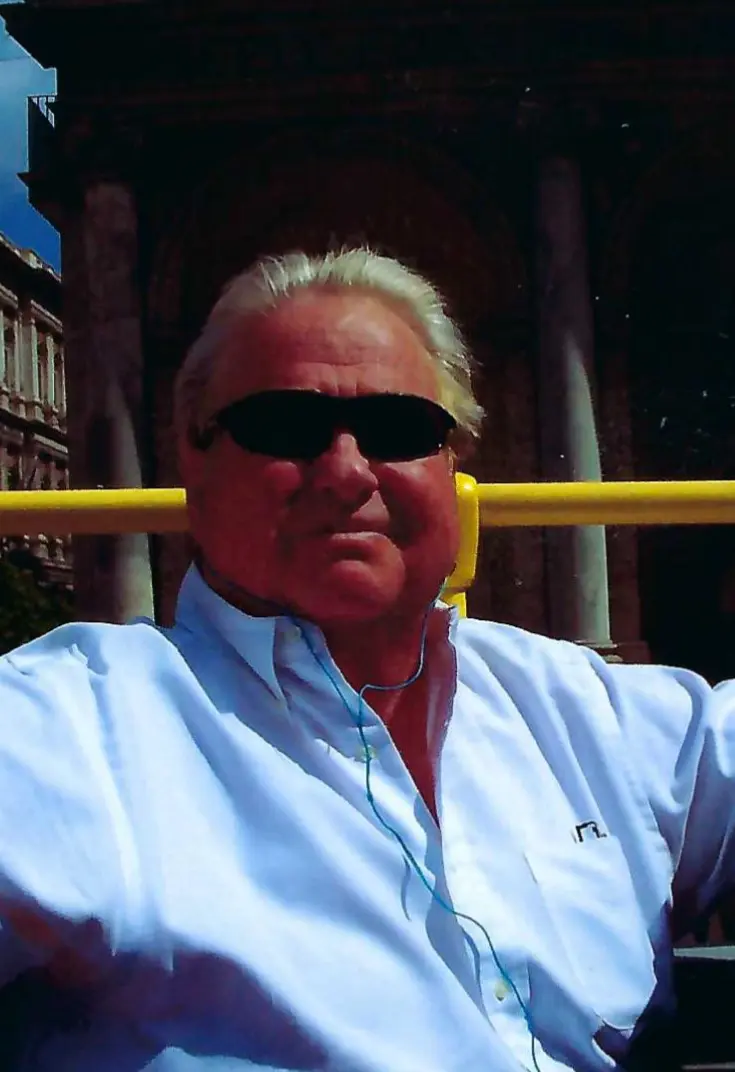
William L. (Bill) Doner
Founder’s Award
In today’s world, Bill Doner would be referred to as “Uber-Promoter”, but over 40 years ago when the charismatic dragstrip entrepreneur was just getting started, he was just another racer promoter. Today, after’s staging as many as a thousand events a year at various tracks up and down the West Coast, he is considered by many as being the king of race promoters.
Bill Doner is a brash talking, big dealing kind of person who loved providing ground-poundin’ excitement for the race fans. When the veterans of the past drag race wars huddled together to chop old jackpots, it’s usually not long before talk turns back around to memories of “Fox Hunts”, “spectacular nighttime fire burnouts, “ (how many?) 64 funny cars!”, And the epic high-volume “Saturday Night!/Sunday Afternoon!” saturation commercials which trademark Donner’s innovative International Raceway Park’s promotion of the halcyon, pre-ESPN 1970s.
How long ago was all that? Fuel funny car driving legend Jon Force, 16-time funny car champion, was a rookie at Orange County in 1978 when Doner ran it and that was near the end of the Doner Decade. However, from the very beginning, he always had a knack for luring the big names. His first five figure crowd at then debt ridden Seattle International Raceway in 1970 saw Don Prudhomme set a new track record of 6.62 ET in route to the top fuel title in an unprecedented mid-March season opener. Doner defied the proverbial Pacific Northwest rainy season and won. With Evel Knievel jumping 18 and 19 cars, respectively, on his “comeback” tour, Doner’s first couple high dollar shows attracted a fleet a future Hall of Famers including race director Steve Evans-a long time Doner ally in the IRP saga. Not only Prudhomme, but Ed McAuliffe, Jerry Ruth, Gary Beck, Herm Petersen, Dick Landy, Shirley Strahan, Roland Leong’s Hawaiian, John Weibe, Mike Snively, and Dave Uyehara ignited imaginations at SIR, with Doner quickly installing lights to usher in night drags at the Northwest premier facility, which soon was solidly in the black ink.
Over his 10 years at the helm of IRP, fully five dozen of the Hall of Famers crowded into the Doner orbit and established an unforgettable brand of drag racing seen never before or since.
Doner has never been a stranger to icons. There are even those who argue the Harvey Wallbanger a cocktail was invented in his bathtub; for certain, when NHRA president Wally Parks was among the celebrities who went to Terlingua,Texas in 1967 for the inaugural International Chili Cookoff, Doner was there stirring the sauce along with one of his many compatriots, serving legend JJ Moon who could “hang 11” because he had six toes on his right foot.
Besides his prowess as a king of race promoters, in 1967 Carol Shelby put the one-time Newport Beach California’s sportswriter in charge of the introduction of the classic Ford Cammer powered Shelby/Benny/Prudhomme “Super Snake” AA/Fuel dragster which debuted by winning the 1968 Winternationals.
After an extraordinarily demanding 11 years, running as many as eight; Washington, Oregon, and California tracks Doner sold off at the end of 1979. He emerged in Baja California, for six years, skippering the seven boat Tortuga fishing fleet, and put himself into the headlines by catching a record 1234-pound black marlin. After this Caesars Palace Hotel/Casino succeeded in luring him back to Stateside Promotions as the casino’s Vice President of Marketing. As such, he shepherded world-class events such as the Sugar Ray Leonard-Marvin Hagler “Super Fight” and attended-rather flamboyantly-to the needs of thousands of Las Vegas high-rollers. This was followed by a four-year term as commissioner of the unlimited hydroplane circuit, which he grew from 6 to 11 races. Yes, there were even some of those ear popping commercials for thunder boat racing crowds across North America.
Also, he never actually quit voicing his distinctive radio ads, serving as many as 15 other drag strips, in addition to his own promotions. Not ready to totally relax, he also added stints as a collegiate play-by-play basketball announcer, television pitch man for new car dealerships, advertising executive, global football promoter (Gary Davidson offered him a World Football League franchise in 1974), pro tennis promoter, thoroughbred horse owner/breeder, major league sports consultant, and creator of the Rose Bowl’s first hospitality concourse at the 1989 1990 New Year’s classic.
Today, Donner lives with his wife Lori and two dogs, Rocky and Rusty, in the Southern California desert community of La Quinta however his links to drag racing have never really ceased; he teamed up with longtime racer promoter, Don Rackemann as the president of the Fuel Saver Group whose products paid contingency money at the Bakersfield California Hot Rod Reunion, and their MPG3 Fuel Enhancer sponsored Corey Lees top fuel funny car which participated at the NHRA World Finals at Pomona in 2011.
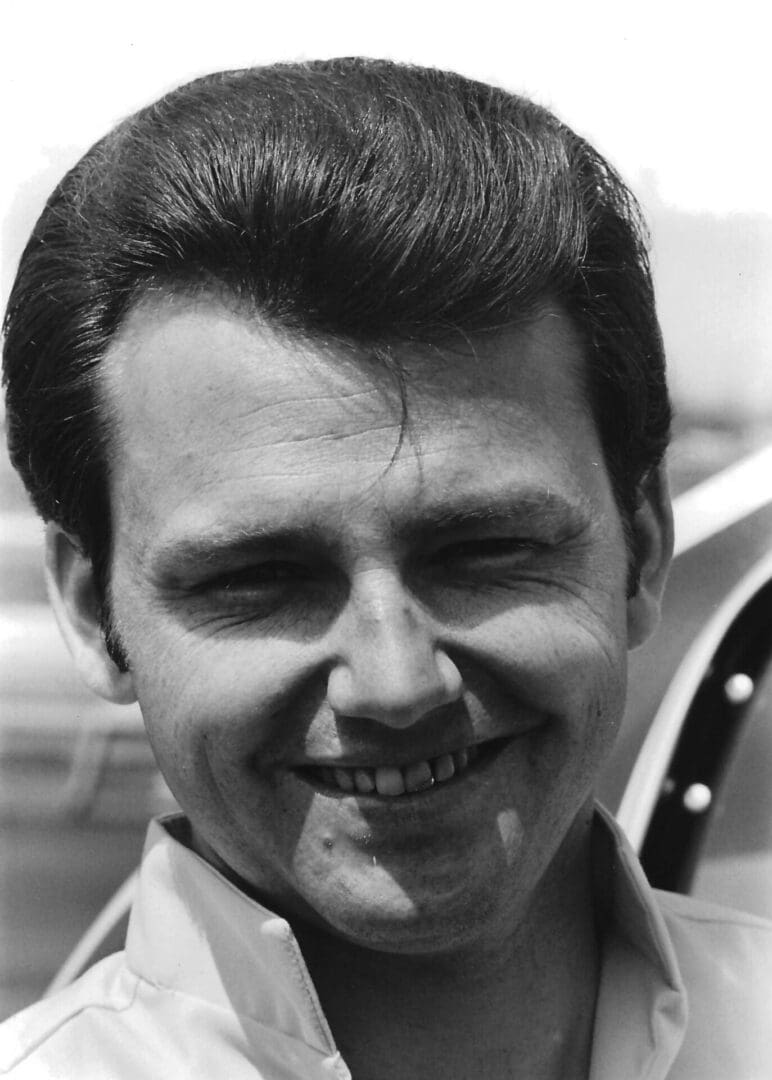
“Fast Eddie” Ed Schartman
Ed Schartman inherited his love of cars and speed from his father who built and wrenched several dirt track sprint cars. Ed made his first trip to a race track with his dad when he was just six years old and his interest grew from that date on. At age 14 he built his first drag car, a 1940 Ford powered by a highly modified flathead engine. At the same time, he was enrolled in every shop, metalworking, and auto mechanics course offered by his local high school in an effort to become the best all-around racer he could be.
After graduating from high school in 1956, Ed began his drag racing career in earnest. His name was first posted in the NHRA record listings in 1958 when he was at the wheel of a B/Gas sedan. Ed’s main interest was in the stock classes and in 1954 he drove his first Mercury A/FX Comet wagon to the class champion spot at the NASCAR Winter nationals in Deland, Florida, and in 1965 he was named Super Stock Magazine’s Rookie of the Year. In the years 1964 through 1967 Ed won an average of 89% of the races he entered into. He was also successful enough to earn the nickname Fast Eddie along the way.
By this time the stock body cars were becoming more exotic and faster so Schartman made the move into the new “funny car” ranks. This was before the name funny car became a household term and the cars were today’s tube chassis, and glass bodied vehicles. The first of these funny cars wore steel bodies around their potent engines and even sported modified “stock” chassis. Ed was one of the very first to compete in a flip top super experimental 1966 Mercury Cyclone. This combination powered Ed to victory circle and at first NHRA Bationals in Tulsa, Oklahoma, in 1966 when he defeated Dyno Don Nicholson. This proved to be an even more successful move when in April 1967 he became the first person to break the eight second ET barrier in a stock bodied car at Detroit Dragway. His success in the popular S/XS class continued throughout 1957 when he won the Manufacturers Funny Car Championship at Orange County Dragway in Irvine, California, the Funny Car Grand Prix Championship at Irwindale Raceway in Irwindale, California, the Northern California Championship Meet at Fremont Dragway in Fremont, California, and set the class elapsed time record at the NHRA Winternationals in Pomona, California.
Fast Eddie competed at most of the major national events during his racing years but became more famous as a competitive match racer and showmen on the many race tracks located around the country. As the class evolved Eddie led the way, working with the Ford/Mercury racing liaison at the time, Al Turner, to make sure his cars incorporated both safety and speed. With this in mind, Turner commissioned the Logge Chassis Group to build the new car using to chassis, fiberglass bodies, and bigger engines. Another item that set Eddie apart from many of these early experimental builders/drivers was the fact that he was personally involved in the planning and building of most of his cars and continued to use various configurations of the Ford/Mercury engine both blown and unblown.
Once retired from active participation in racing Eddie went on to become an authorized NAPA parts dealer.
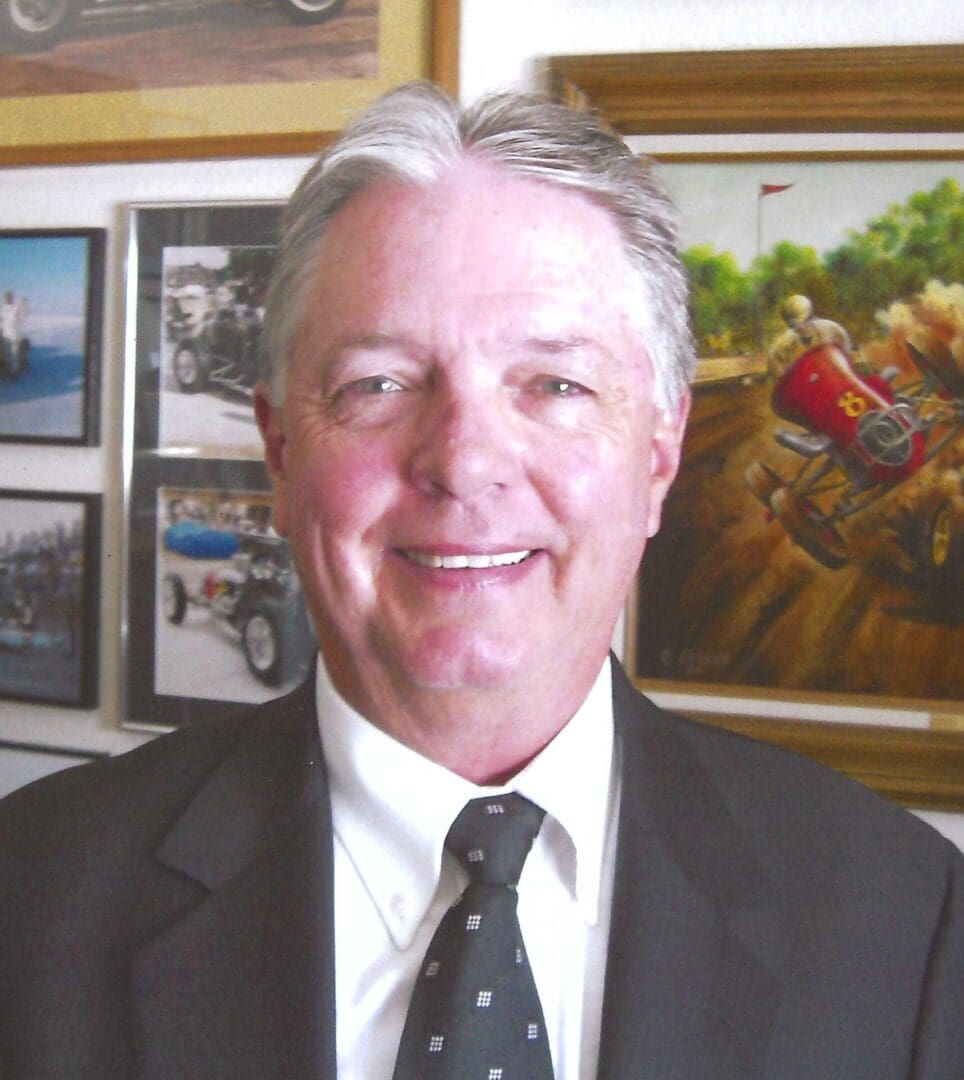
Carl Olson
Carl was introduced to and hooked on racing at the early age of three as a spectator at the local midget dirt race. His early exposure to racing was mostly in the oval track arena but in 1957 he went to the old Long Beach Lions Dragstrip and was immediately intrigued by the dragsters. After hanging around the Modern Muffler Shop in his hometown of San Pedro California, where the Stecker, Golden and Cobb team housed their fuel dragster for a while, the team invited Carl to go to the races with them and he became even more hooked on the sport. While serving in the US Coast Guard Carl was stationed in Alameda, California which was located a short hop from the Half Moon Bay and Fremont drag strips where Carl spent as much time as possible as a spectator. It was at Fremont that he met Nick Mura who was competing with the 426 Wedge Dodge powered AA/Fuel dragster and was able to work his way up to Mura’s crew chief.
When Mura decided to stop racing in 1965, Carl was able to buy his rig and was soon sitting in the driver seat. Upon receiving his discharge from the Coast Guard, Carl made his way back to Southern California and landed a job in the performance aftermarket arena and replaced the Dodge Wedge engine with a smaller Dodge Hemi that allowed him to compete in the popular junior fuel class. During this time, he also reconnected with Bill Stecker who was partnered with Jackie Ewell in a blown 392 Chrysler powered Race Car Engineering top fuel dragster. Soon Carl was crewing on this car and when he Ewell broke his leg racing minibikes, Carl moved into the driver seat as well. When the opportunity to become a partner in this operation was offered, Carl traded his junior fuel car to Stecker for his share of the team and became the team’s full-time driver. In 1969 the team really stepped into the big time, purchasing a “Woody Gilmore” car and dropping one of the new Chryslers Elephant Hemi engines into the rails and promptly winning the prestigious “Grand Prix of Drag Racing” event at Irwindale Raceway and later setting top time at the 1970 NHRA Winternationals at Pomona, California.
When the 1970 season closed out, Carl wanted to devote more time and effort to the sport so he purchased the Black Plague AA/Fuel dragster of Frank Rupert and Steve Peck, borrowed a couple blown early 354 Hemi engines and spare parts from a friend, Don Bowman, and entered the top fuel wars as an independent owner/driver. A blown engine followed by a fire in a crash at Fremont destroyed the car and put Carl out of business before he really came settled into it.
After firing his latest driver, Mike Kuhl heard about Carl’s accident and offered him the driver’s job in his top fuel dragster which Carl immediately took. Their five-year relationship started with them winning the first race they entered as a team and continue to win more than their share of races. When time allowed him to Carl drove several other cars including Jesse Perkins “Cow Palace Shell” fueler and TB Smawood’s AA/Fuel dragster but the Kuhl and Olson team car was his real delight. In 1971 they became partners in one of the first mid-engine cars to be built which they debuted that fall at the NHRA US Nationals in Indianapolis, Indiana. They were able to win several rounds of eliminations but lost in the semifinals however, they did manage to walk away with the Best Appearing Car Award from the event.
At the end of that season, they installed one of the new Donovan Engineering 417 aluminum Hemi engines for power; and promptly won the 1972 NHRA Winternationals with the new combination. As a result of this win and the potential it offered, the team of Kuhl and Olson joined the ranks of the professional racers living on the road and racing at every NHRA and IHRA national event plus as many match races as could be shoehorned into the schedule. At the end of the 1972 season they had won the IHRA World Championship and been recognized by the editors of Drag Racing Magazine as the Real-World Champions. A crash at the IHRA Nationals in Dallas, Texas destroyed the car but Carl emerged uninjured and the team was able to compete in the NHRA World Finals two weeks later. They ended the 1972 season by winning the “Last Drag Race” that heralded the end of racing at Lions Dragstrip. In 1973 they were runner-up to Gary Beck at the NHRA US Nationals in Indianapolis and in 1974 won the Bakersfield March Meet and ran top time and low ET for the event, also gaining membership in the exclusive Cragar Five Second Club. As difficult as the decision was for Carl, at the end of the 1974 season he decided to retire from racing. The team did campaign the car through 1976 with other drivers but elected to retire the entire operation at the end of the season.
While he was retired from active racing, Carl was still very active within the sport and the industry first as the General Manager of Waterman Racing Engines, then a stint with SEMA as its Technical and Legislative Director, then a move to several positions over 25 years at the NHRA, and in 2001 he became Motorsports Manager at the SF I Foundation Inc. a position in which he continues to serve.
In addition to his drag racing history, among Carl’s many accomplishments and honors are: member of the Bonneville 200 MPH Club, several positions within SEMA including a seat on its Board of Directors, President of Federation International de L Automotive drag racing Commission hand consultant to several foreign race facilities.
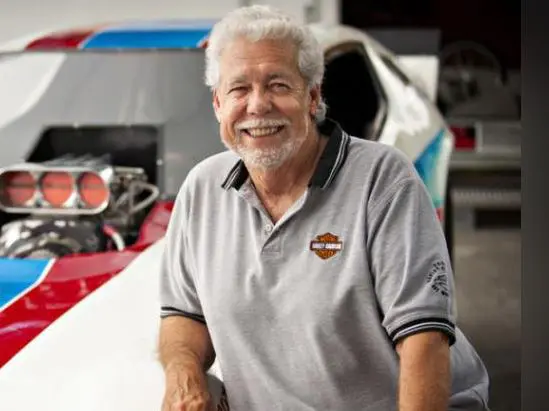
Ray Motes
Ray Motes is another of the sport’s multi-faceted participants who became interested in the sport at very early age. At the ripe age of 11, his dad took him to a jalopy race and he was instantly bitten by the race bug. Later he saw a movie that had a couple shots of drag racing and decided that was where he wanted to begin. While still in junior high, Ray became the proud owner of a 1949 Ford that qualified for F/Stock in AHRA competition. Because there wasn’t an NHRA track in Kansas City where he lived, he had to sneak out of town to others surrounding locations to be able to race. In 1961 Ray moved up a few classes to compete and F/Gas with a 1940 Ford powered by a modified flathead but he wanted to go even faster so he built a Model T Bucket roadster still using a modified flathead for its power. This car set the AHRA speed and ET records and provided Ray with enough winnings to build his next and more serious car. This one was a glass T Bucket on a tube chassis with a 301 cubic inch Chevrolet for power in BB/Roadster class and with which he promptly set another pair of AHRA records. Still seeking to go faster, he bored and stroked the Chevy to 377 cubic inch and switched to nitro for fuel. This latest addition for power resulted in an extremely ill handling machine so his answer to the problem was to install a blown Chrysler Hemi which very quickly proved to be the wrong answer. Since he still had the engine but realized the roadster was not the answer, in 1967 Ray acquired a dragster chassis, installed the blown Hemi in it and switched back to gas. This combination proved to be more successful and he started winning at the local tracks. At this time there wasn’t an NHRA track in Ray’s area so he made another engine change, installing a blown late-model Chrysler “Elephant” Hemi in the dragster and ran well enough to encourage him to travel the distance necessary to compete with the NHRA Division V circuit.
In 1968 Ray met Dwane Smith while competing at his local Kansas City track and was promptly offered a job in Dwane’s automotive speed equipment business which he took without hesitation. Working together as a team the pair established a chain of speed shops across Kansas, Missouri, and Oklahoma under the name Grand Prix Speed Shops. They also organized and sponsored a top gas circuit called the Midwest All-Stars. While putting together the chain of stores and the circuit, Ray teamed up with RC Williams to continue with his driving efforts still with a Hemi powered gas dragster. When the single engine proved to be unable to compete with the twin engine gas dragsters the pair made the switch and built their own twin 454 cubic inch Hemi powered dragster which proved to be more successful and more fun to drive.
Like most racers, Ray wanted to go faster and experience a greater variety of cars so when NHRA eliminated Top Gas in 1972 he took over the controls of the “Hot Sauce” AA/Fuel funny car with some moderate success. In 1975 Ray moved into the driver’s seat of John Pusch’s AA/Fuel funny car competing mainly in division races and match races. In 1985 he teamed up with RC Williams again; this time campaigning the Cherokee Warrior AA/Alcohol funny car. The car provided the team with the 1985 AHRA World Championship, the 1988 ADRA World Championship, and the 1993 NHRA Shoot Out event. In 1994 Ray retired from driving to devote full time to his business endeavors.
After leaving the performance retail and wholesale business in 1985, Ray spent the next 23 years as Vice President and General Manager of Taylor Cable Products. In 1994 Taylor Cable Products purchase Vertex Magneto’s which Ray probably return to its prime standing within the industry. Ray retired from Taylor Cable in 2008 but still remained active within the industry partnering with his son in a Goodyear Automotive Care Center. Also, at Taylor Cable, Ray established a very racer friendly sponsor and contingency awards program that has benefited a number of competitors in various racing arenas.
During his driving career he won four national events including the NHRA World Finals and the last Top Gas dragster win ever at the NHRA US Nationals in Indianapolis, Indiana, and NHRA World Championship, an AHRA World Championship, and an ADRA World Championship to become the only person to win world championships in all three sanctioning bodies. He was also named NHRA Division V Man of the Year in 1971, received its 1970 Performance of the Year Award, it’s Driver of the Year in 1970, it’s 1993 Shootout Winner, and was inducted into its Hall of Fame in 2002. In 2004 at the Heartland Hot Rod Reunion he was awarded the “Outstanding Lifetime Achievement in Drag Racing” Award.
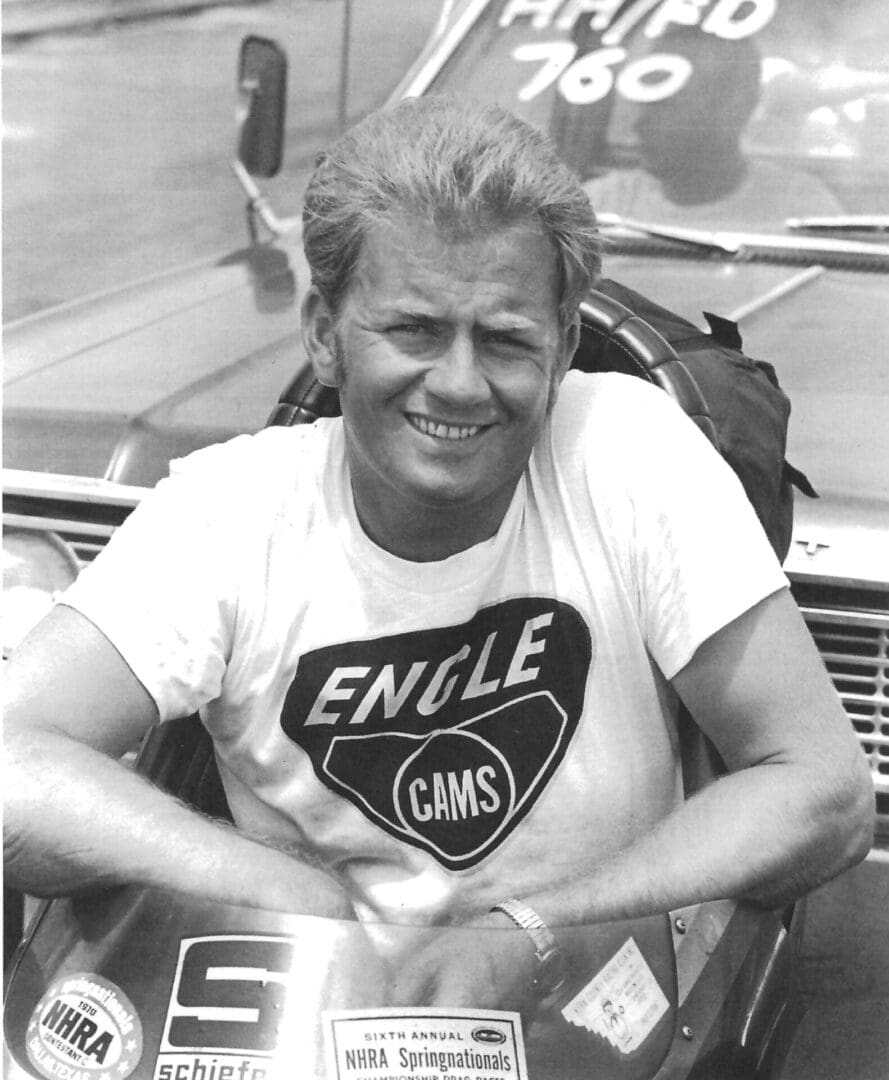
Don Moody
Don Moody began his colorful racing career at the age of 16 in his hometown of Tulsa, Oklahoma, in 1957, in a modified Chevrolet sedan. Later that year he took over the driving chores for Bob Creitz in Bob’s newly built unblown Chevy powered A/Modified fuel roadster. The new combination was an instant success with Moody clocking a 152 MPH and 9.90 ET for a new NHRA class record and running an unblown fuel car. They were allowed to compete in the local top gas events where they won their share of races. In 1959 Don bought an AA/Gas dragster and with Creitz doing the engine work and tuning, the duo set a new NHRA class ET record of 9.75 seconds and 159 MPH. With their local success, the duo decided to head west to compete at the Southern California race tracks. Liking what he saw, in 1960 Don moved to the Los Angeles area and after a brief stint working at a Chevrolet dealership in the area, he went to work at Engle Cams where he spent the rest of his working career.
His first dragster ride after the move to California was in an AA/Gas dragster built by Ron Scrima, owned by Don and Dave Davis, and powered by a Carroll Davis built blown 470 cubic inch Oldsmobile. The car was very competitive, winning top gas at Lions Dragstrip an impressive eight straight weeks but with nitro becoming more popular, the pair wanted to move up the ladder so they teamed with Doc Magan who had a successful record in drag boat racing and supplied the teams blown Keith Black Chrysler on nitro and in November 1962 they won top Eliminator at Pomona, California and set a new track ET record of 7.96 seconds at 187.50 MPH. 1972 was a dream year for the Walton-Cerny-Moody team. With Don handling the driving chores the team won more big meets than any other top name pro-racer/team that year, was the all-time money winner in the class at that time for one season, won the PRA race in Tulsa, Oklahoma, won the NHRA Supernationals in Ontario, California while setting an all-time low ET of 5.91 seconds.
In 1963 Don moved his driving skill to the seat of the Stellings, Graffio & Moody AA/F dragster and promptly won the first NHRA divisional race at Pomona, California they entered with an event low ET of 8.20 seconds. In July 1963, Don left Stellings and Graffio to become part of Zeuschel, Fuller & Moody. The team dominated the class at most of the Southern California race tracks the rest of the season and early 1964. On August 8, 1964 while on a strong run at Lions dragstrip, a heim joint in the steering on Don’s car broke sending him into the fence at the finish line and destroying the car. While Don wasn’t injured badly, with the team low on funds for a new ride, he took some time off from driving to enjoy other pastime hobbies and concentrate on his general managers position at Engle cams.
After an absence of six years, in 1970 Don once again climbed in the driver seat of the top fuel dragster, this time it was the front motor car of Wes Cerny. Don’s first weekend in the car he ran a top speed of 230 MPH with the low ET of 6.37 seconds. In addition to winning on a regular basis, the Cerny and Moody car also held the track speed and ET records at Lions Dragstrip, Orange County Raceway, Irwindale Raceway, and Carlsbad Raceway. Following the new trend, the team switched to a rear engine dragster in late 1971 and promptly turned in and unbelievable 6.35 ET. At the 1972 Winternationals in Pomona, California there was a horrific engine explosion that severely damaged the car and while they did put it back together, they decided to sell it and build a new car.
The new car was “all-new” including the switch to a late-model 426 Chrysler Hemi for power along with several other chassis improvements. The new combination proved to be as reliable as the old combination when they won the first PRA meet in Tulsa, Oklahoma with a 6.21 ET at a 229.00 MPH. Later that same year, Don became the third member of the Cragar Five Second Club when he recorded the low ET at the NHRA Supernationals in Ontario, California of 5.91 seconds while on his way to winning the event. In his own words Don said 1970 was a good year for him and drag racing, he went from 6.37 seconds ET using a 392 Chrysler at the years beginning to 5.91 seconds ET with a 426 Chrysler at the years end. One of the results of his success in 1972 was Don being named as a “Hi-Riser” by Car Craft Magazine in 1973. Don retired from driving for good at the end of 1972.
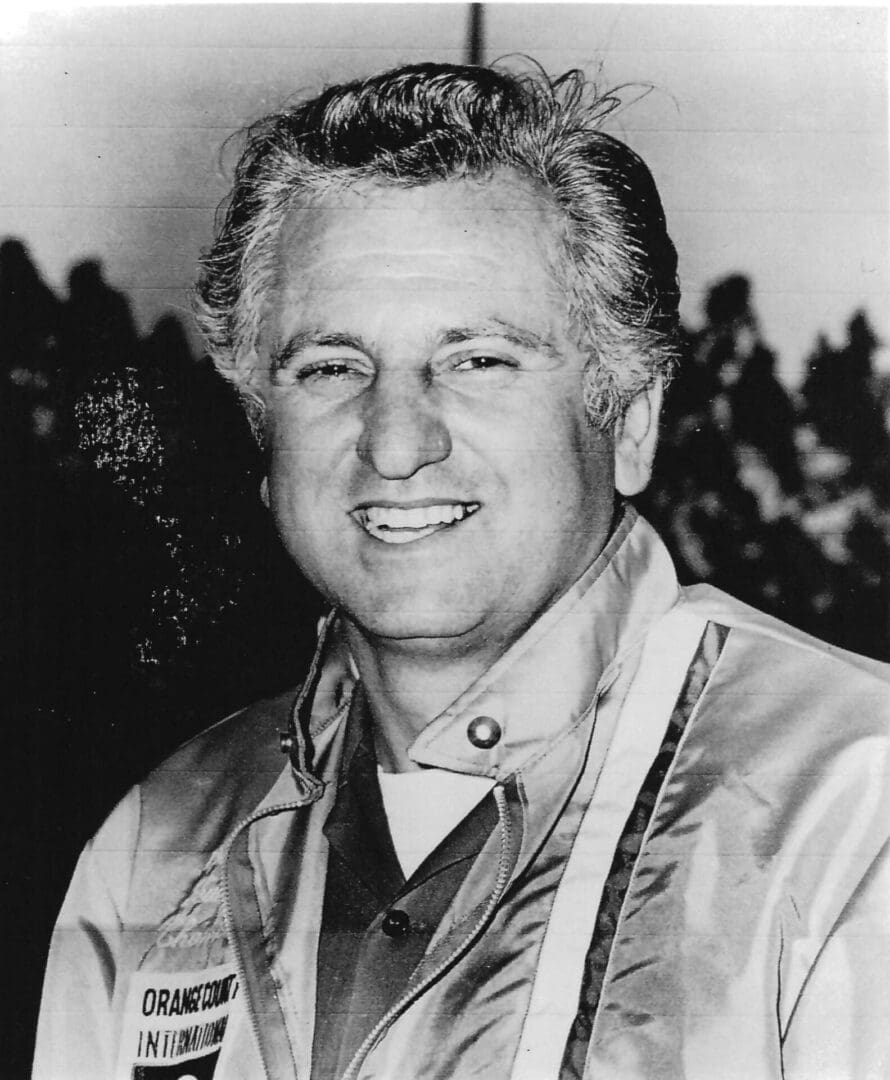
Jon Mazmanian
John began his racing career one way by accident, in 1960 when he purchased a new Corvette that was loaded with every option available but it wasn’t until he learned his nephew, Richard Siroonian, was borrowing it to do some street racing that John decided to become involved in organized racing instead with Richard doing the driving. Starting with the Corvette there was never a time in John’s racing career that he didn’t insist on having not just the very best performing car but also the best-looking car in the pits. After competing as a stock sports car in 1961, the car was modified to compete and CM/SP class at the 1962 Winternationals in Pomona, California where the team picked up its first national event win. By the mid-1962 season, John had added more performance pieces including a 6.71 blower and Hilborn injectors and installed a new driver, Robert “Bones” Balough and continued the teams winning ways. Another very visible addition to the Corvette was a candy persimmon red mixed with 24 karat gold leaf paint job that was to become John’s trademark for all of his cars that followed. There was also one other trait set him apart from the other competitors, in addition to the regular between round maintenance John’s crew also had to wash and clean the car between every round.
In 1963 John had a blown Chevy powered 1941 Willie’s B/GS coupe built that followed in the footsteps of the Corvette as both a winner on the track and in its outstanding looks; with one outside exception, the coupe was originally fire engine red. Always the competitor, and January 1964 John had “Bones” build and install a 467-CID blown Chrysler to replace the Chevy and immediately the car jumped into the 150 MPH area. This also marks the beginning of the now famous “Gasser Wars” with almost weekly match races being conducted among the top super gas coupes of the era. In keeping with his passion for having the best-looking cars in the pits, in mid-1964 John had the Willie’s painted with 35 coats of candy apple red.
After three years of racing the Willie’s, John introduced a blown Chrysler powered 1950 Austin coupe to race fans that featured the same candy apple red paint job as the previous cars and that perform even better. During the gasser wars era, John and the other competitors in the wars were among the first drag racers to participate in an ongoing “feud” campaign promoting their match races along with the parts produced by very speed equipment manufacturers. As the Gasser’s popularity began to wane in favor of the new funny car class, John made the switch with a blown Chrysler powered 1968 Barracuda AA/Fuel funny car.
In 1970 John proudly introduced another blown Chrysler powered AA/Fuel funny car, this one being a 1970 Barracuda. This car was the first funny car to run an official 220 mph with a record-setting 6.77 second ET. The last funny car John raced was a 1972 Barracuda that carried the John Mazmanian tradition of being one of the quickest, fastest, and most beautiful at the track.
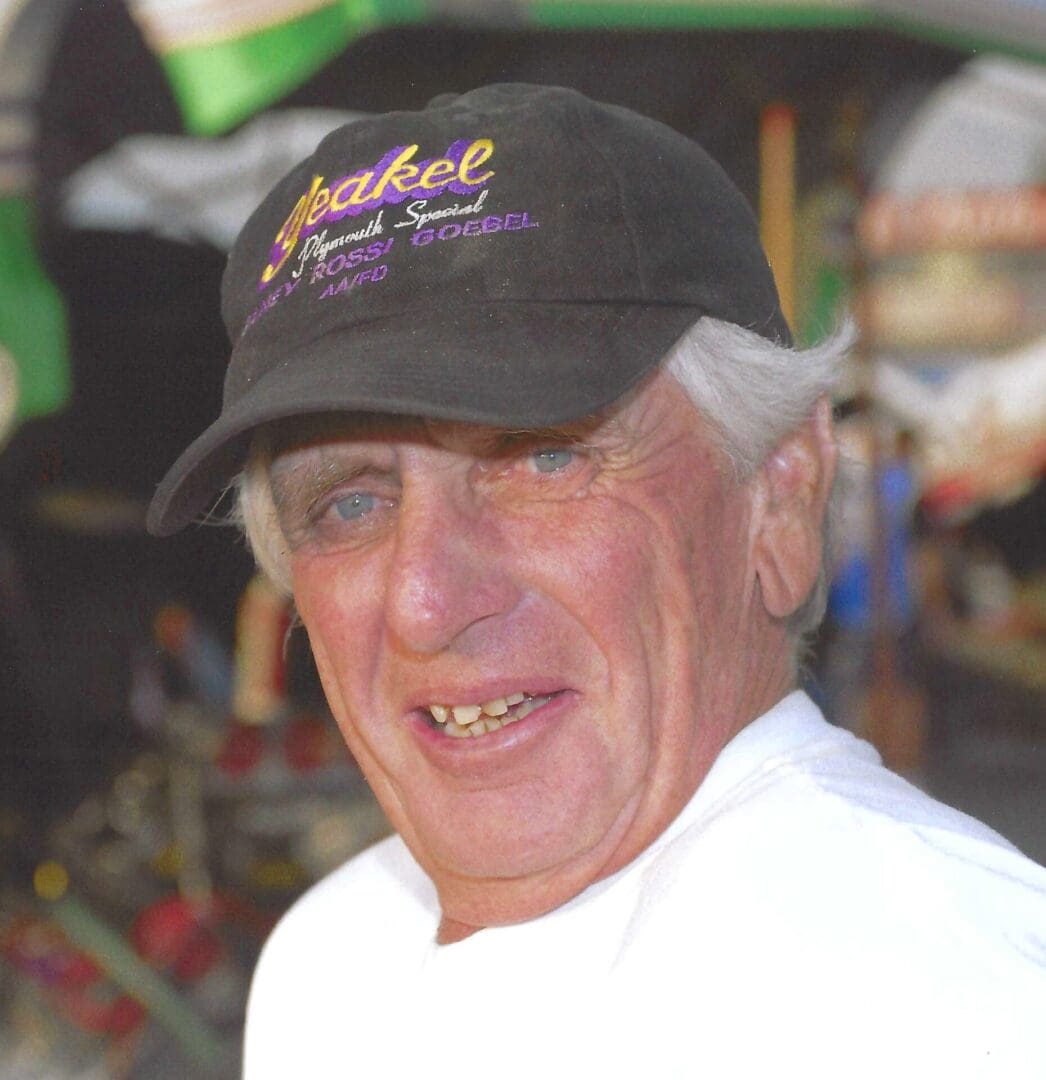
Mike Kuhl
Mike Kuhl was born in Dayton, Ohio but raised in St. Louis, Missouri where in 1955 he opened his first business venture, Mike’s Garage, and where he first began honing his knowledge of how to build top rank cars. His first exposure to sanctioned drag racing was in 1954 when he traveled to Parks Air College in Granite City, Illinois at the age of 16 unlike a lot of today’s racers, he was hooked. In 1960 at the wheel of a 1940 Willie’s AA/GS coupe, Mike set the class record at the AHRA Nationals in Kansas City, Missouri at 132.00 MPH.
In 1964 Mike closed the doors on his garage in St. Louis and moved to Long Beach, California. Shortly after arriving in California he went to work at Louie Unser’s Engine Shop in Santa Ana, California, where he continued to explore the many ways to build strong-reliable race engines and where he was employed until 1970. Also, in 1969, Mike was competing locally with a Chrysler powered, (Woody) Race Car Engineering built, 392 engine AA/Fuel dragster with Steve Carbone driving; they won the Professional Dragster Championship event at Orange County International Raceway in Irvine, California.
In 1970 Mike opened the doors to Mike Kuhl Racing Enterprises where he began designing and building blown River Rat Big Block Chevy engines for ski boats. With his engine building business growing steadily, in 1971 Mike teamed up with Carl Olson as co-owner and crew chief of a Donovan 417 powered (Woody) Race Car Engineering built, rear engine AA/Fuel dragster. The team success that season was good winning the 1972 NHRA Winternationals, season opener, at Pomona, California giving them the opportunity to go on the road as touring professional racers. They lived on the road and competed at every NHRA and IHRA national event as well as many divisional events plus a lot of match races that were squeezed in between the “big” events. 1972 was a banner year for the pair, in addition to winning the Winternationals in Pomona; they also won the All Pro Series Championship race at Orange County international Raceway in Irvine, California, the IHRA Pro-Am Nationals in Rockingham, North Carolina, the Top Fuel Eliminator at the IHRA Nationals in Dallas, Texas, the IHRA Top Fuel World Championship, and closed the season winning Top Fuel Eliminator at the famous “Last Drag Race” at Lions Dragstrip in Wilmington, California. Their success as touring professionals along with sponsorship from Revell Models kept the team on the road for the 1972 znd 1973 seasons but for the 1974 season they competed mainly in the NHRA national events as well as the local South California race tracks. They continued their winning ways by taking home the top fuel eliminator win at the Bakersfield, California March Meet. Mike also became one of the exclusive members of the Cragar Five Second Club in 1974 along with Carl. At the end of the 1974 season Carl chose to retire from driving to pursue other interests and while the pair did run the car with a few other drivers, they decided to both retire from racing in 1976 and sold the entire operation to Englishman Clive Skelton.
The engine business was still going strong in 1977 but Mike decided to expand and open Mike Kuhl Superchargers where he built some of the best superchargers and related parts available. In 2001 Mike sold the supercharger business with the thought in mind of retiring, but in 2002 he founded Kuhl Klassics Restoration where he presides over the restoration of vintage race cars and boats. Since opening the doors at the restoration shop, Mike has completed restoration of his original 1968 RCE AA/Fuel dragster along with one of the 1968 Mr. Ed fiberglass race car trailers, completed a frame off restoration of a 1966 Ford F 100 pickup, and completed restoration of the 1968 original (Woody) RCE Tom McEwen Tirend Activity Booster car. In 2007 Kuhl and Olson were awarded the NHRA California Hot Rod Reunion Lifetime Achievement Award. Mike also co-owner and crew chief of the Kuhl, Olson and Bowman A/Blown fuel rear engine modified roadster which competed for land speed records at the Bonneville salt Flats.
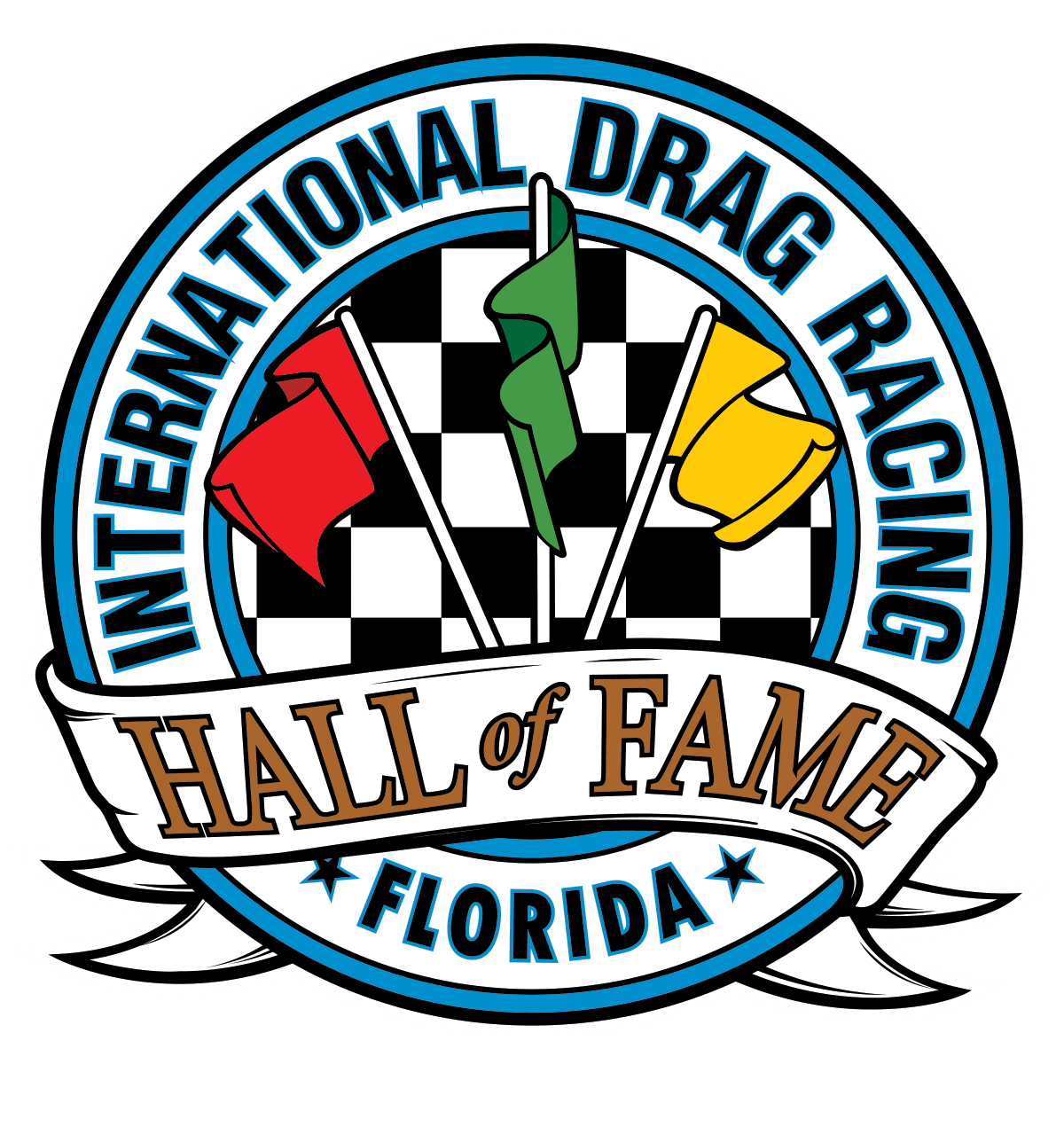
Bob Brandt
Bob Brandt, born and raised in and around Cleveland, Ohio and has been involved with professional drag racing all of his adult life, starting in the amateur ranks while he was still in high school in a 1939 Plymouth H/Gas car. From there he teamed with school buddies Bo Lyons and Dale Stocker in a high school drag racing team in Windham, Ohio later on competing with fellow tool and die maker Royal Langford with a BB/GS Anglia. When Stocker went into the Army, he “willed” his potent 1957 Chevy E/S national record holder, at the time, to Bob to compete in during the duration of his service. With which Bob was very successful. While he was a teenager in Cleveland Bob was also hanging around the race shops of David Meal, builder of Joe Hrudka’s Willie’s Pie Wagon, Sikora Brothers and Sam Gillner. The more time he spent at the shops the more experience he was gaining by working on many of the various race cars they were either building or repairing. Bob’s apprenticeship as a tool and die maker helped him a lot as he became more and more involved in building and tuning a wide variety of race cars. Bob also spent a lot of time at Dick Malone and Chuck Finders shop. Later working with Malone in the tool and die industry. Malone, later founded S&S Superchargers.
In 1960 Bob’s family moved Southern California and he was soon dividing his time between working with his dad in the heating and air-conditioning business by day and most of his spare time at Roland Leong’s race shop at Keith Black’s. It was at Roland’s that Bob met Don “The Snake” Prudhomme and shortly after their introduction, Snake asked Bob if he would like to help him with his AA/Fuel dragster at an upcoming PDA meet. Things went well for them at the event so Snake invited Bob to drive his rig and crew for him at the upcoming Englishtown, New Jersey Summernationals. After that event things just, sort of evolved and before long he was working for Don on a full-time basis, going between the dragster which at the time was the car they raced at the national events and the funny car that was mainly for match racing. The pair soon realized they work very well together and their commitment to making the team a complete success was so strong the Don and his wife Lynn let Bob move in with them while he was locating a place in the San Fernando Valley area to live. After a few successful seasons competing this way, the dragster was retired and the funny car became the prime race car with which the team amassed their impressive win streak Bob serving as crew chief on both
As the saying goes, “the rest is history”. Bob was Snake’s crew chief for 17 years during which time they were able to put together for World Championships along with numerous speed and ET records including the first recorded 250 MPH run by funny car. They also racked up 34 national event wins and even more match race victories. After retiring from his position with the Snake, Bob also served as crew chief for Gary Ormsby’s top fuel dragster during the 1986 and 1987 seasons, followed by Australian Rachelle Splatt’s and Daniel Deporter’s AA/TF car. Bob was crew chief for Cruz Pedregon driving Larry Minor’s McDonald’s sponsored AA/Funny Car winning three national events. When Joe Gibbs purchased the McDonald’s operation from Minor, Bob stayed on as crew chief and overall manager of the operation tuning Cruz to another five national event wins. In 1998 Don Schumacher contracted Bob to build the Excited Top Fuel Dragster Team, and reentered the drag race competition arena of which Bob was the crew chief, and then in 1999 the team won its first NHRA AA/Fuel dragster championship. With Dan Olson as crew chief and Bob as team manager.
Along the way, Bob is able to count among his accomplishments, seven consecutive Car Craft Magazine All-Star Team Crew Chief of the Year Awards, another eight-time finalist showing for the same award, was named recipient of the 1976 S-K Tools Hall of Fame Award, four fuel funny car world championships, and an impressive win total of 48 national event championships.
Bob feels his success in fuel racing was inspired by Keith black, Ed pink, and Don Prudhomme.
